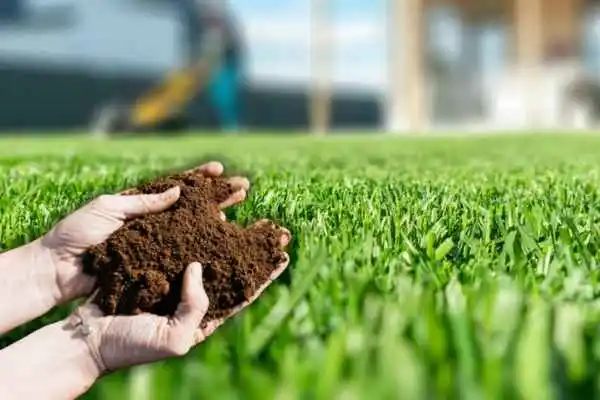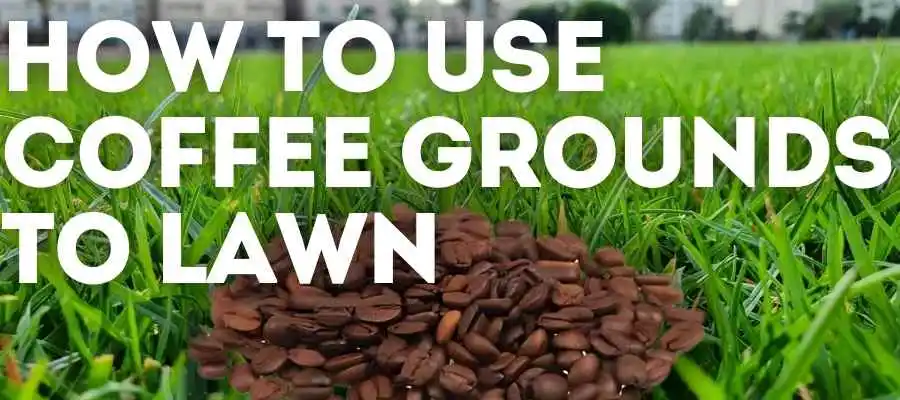Ever wondered what to do with those used coffee grounds instead of tossing them in the trash? Imagine turning your daily coffee ritual into a powerful tool for a lush, thriving lawn! Using recycled coffee grounds is not only eco-friendly but also cost-effective.
By incorporating coffee grounds into your lawn care routine, you can enhance soil health, boost plant growth, and contribute to a sustainable gardening practice. This guide will walk you through the benefits, preparation, and application of coffee grounds for lawn care.
Why Do People Put Coffee Grounds in Their Yard?
Nutrient-Rich Benefits
Coffee grounds are a treasure trove of essential nutrients. They contain nitrogen, phosphorus, and potassium, which are crucial for plant health. Here’s a closer look at these nutrients:
- Nitrogen: Promotes vigorous leaf growth.
- Phosphorus: Supports root development and flowering.
- Potassium: Enhances overall plant health and disease resistance.
For example, coffee grounds typically have a nitrogen-to-carbon ratio between 11:1 and 20:1. This ratio is comparable to fresh manure, making them an excellent source of nitrogen for composting and soil enrichment.

Free and Sustainable
One of the greatest benefits of using coffee grounds is that they are usually available for free. Local coffee shops often dispose of used coffee grounds, and many are happy to give them away. This practice not only reduces waste but also provides a valuable resource for gardeners.
Mulching and Fertilizing Benefits
Coffee grounds act as a slow-release fertilizer. They gradually release nutrients into the soil, which improves soil structure and fertility. Additionally, coffee grounds help with:
- Water Retention: They absorb and retain moisture, which is beneficial during dry periods.
- Soil Aeration: They enhance soil texture, allowing air to reach plant roots more effectively.
- Pest Deterrence: Coffee grounds can deter pests like slugs and snails, making them a natural and non-toxic option for pest control.
Neutral pH
Used coffee grounds are generally close to neutral pH (around 6.8), making them suitable for a variety of plants and lawns. While some sources suggest variations in pH, coffee grounds are not highly acidic or alkaline, so they won’t drastically alter your soil’s pH balance.

Are Coffee Grounds Good for Lawns?
Yes, coffee grounds are beneficial for lawns. They provide essential nutrients like nitrogen, phosphorus, and potassium, which promote healthy grass growth.
Additionally, they improve soil texture and help with water retention. Just remember to use them in moderation to avoid creating a thick crust that can block water and nutrients.
Disadvantages of Coffee Grounds as Fertilizer
Despite their benefits, coffee grounds have a few drawbacks:
- Potential to Form a Crust: If used in excess, coffee grounds can form a layer on the soil that blocks water and air.
- Slow Nitrogen Release: The nitrogen in coffee grounds must break down before it benefits plants, so they are not an immediate source of nitrogen.
How to Prepare Coffee Grounds for Lawn Use
Collection
Collecting coffee grounds is straightforward. Simply ask your local coffee shops if you can take their used grounds. Many places are more than willing to give them away. At home, you can save your own grounds from your coffee maker.
Preparation
Before applying coffee grounds to your lawn, you should prepare them properly:
- Remove Lumps: Spread the coffee grounds on a tray or newspaper. Break up any clumps and mix them to ensure an even texture.
- Drying: If the grounds are wet, allow them to dry out. Wet coffee grounds can clump together and may form a barrier on your lawn, restricting water and nutrient flow.
How to Apply Coffee Grounds on Your Lawn
Choosing the Right Time
The best times to apply coffee grounds are spring and summer. During these seasons, plants are actively growing and can benefit from the nutrients in the coffee grounds. Avoid applying them in autumn and winter, as encouraging new growth during these dormant seasons can harm your plants.

Application Method
- Sprinkling: Spread the coffee grounds evenly across your lawn or around individual plants. Use a thin layer to avoid creating a thick, water-blocking crust.
- Watering: After applying coffee grounds, water the lawn thoroughly. This helps the nutrients seep into the soil and reach the plant roots.
Additional Uses
- Composting: Add coffee grounds to your compost pile. They are rich in nitrogen and help decompose other organic materials.
- Pest Control: Besides deterring slugs and snails, coffee grounds can also attract beneficial earthworms, which improve soil health.
Tips for Best Results
Use Gloves
Handling coffee grounds can leave a stain on your hands. Wearing gloves can make the process cleaner and more comfortable.
Don’t Overdo It
Avoid using too many coffee grounds at once. Excessive application can lead to a crust forming on the soil surface, which can impede water and nutrient absorption.
Conclusion
Using coffee grounds for your lawn is a practical and eco-friendly method to boost soil health and plant growth. With their nutrient-rich content, free availability, and multiple benefits, coffee grounds are a valuable resource for gardeners. Give it a try and enjoy the positive impact on your lawn!
Feel free to share your experiences with using coffee grounds or ask any questions in the comments below. Happy gardening!
FAQs
Do Ants Like Coffee Grounds?
Ants are generally not attracted to coffee grounds. In fact, coffee grounds can act as a deterrent for some pests, but they do not have a significant impact on ant populations.
Do Squirrels Like Coffee Grounds?
Squirrels generally do not have an interest in coffee grounds. They are more attracted to seeds and nuts, so coffee grounds are unlikely to affect their behavior.
Do Coffee Grounds Keep Bugs Away?
Coffee grounds can help deter certain pests, like slugs and snails, due to their texture. However, they are not a foolproof method for keeping all bugs away. Their effectiveness varies depending on the pest and how the grounds are used.
When Should You Not Use Coffee Grounds in the Garden?
Avoid using coffee grounds in the garden:
- In Excess: Too much can create a barrier on the soil.
- During Dormant Seasons: Avoid applying them in autumn or winter when plants are not actively growing.
Which Plants Cannot Use Coffee Grounds?
While coffee grounds are beneficial for many plants, they are not suitable for all. Avoid using coffee grounds on:
- Acid-Loving Plants: Some plants, like blueberries and azaleas, prefer acidic soil. Coffee grounds are not acidic enough to affect their pH significantly.
- Sensitive Plants: Plants that are sensitive to changes in soil texture or moisture might not thrive with coffee grounds.

